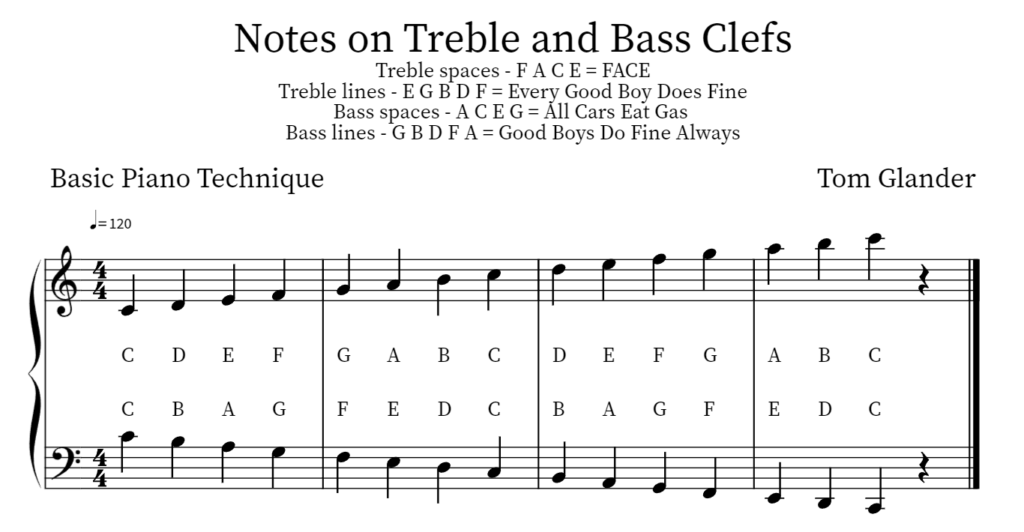
First Step: Learn where the notes live on the lines and spaces of the treble and bass clefs. Some memorization will be required, but it’ll be fun and mnemonics will help!

There are only 7 primary notes – A, B, C, D, E, F, G. These are the musical building blocks, just like letters in words. Traditionally, we use “middle C” as an anchor note.
An “anchor note” is a note you use to keep track of where you are, and where the other notes are in relationship to the anchor. Think of a ship full of notes, all anchored by middle C… in the sea. Maybe that’s not the best analogy, but you get the idea.
NOTE: Though there are 7 letter notes, there are also sharps and flats that add to the notes. There are 5 black keys. So if we add the 7 white keys, A through G, to the 5 black keys, we have 12 notes total. Don’t get bogged down in this right now, just take it in and let is settle somewhere in the back of your mind. It’ll become very clear very soon.
The treble clef is on top, and a bass clef on the bottom. The right hand usually plays in the treble clef, and the left hand in the bass clef.
Each note occupies a line or a space on the clef. The lines have names, and the spaces have name. Notes cannot occupy more than one line or one space at a time.
The lines and spaces names are the same as the note names. The lines and spaces are just “addresses” where the notes “live.” Learn the lines and spaces in each clef.
Treble lines = E, G, B, D, F
Treble spaces = F, A, C, E
Bass lines = G, B, D, F, A
Bass spaces = A, C, E, G
Use a mnemonic to help you remember the lines and spaces. In the Treble clef — we’ll use “Every Good Boy Does Fine” for the lines, and “FACE” for the spaces.
Bass clef — we’ll use “Good Boys Do Fine Always” for the lines, and “All Cows Eat Grass” for the spaces.
Remember the phrases, and you’ve memorized the lines and spaces on the treble and bass clefs.
Also, remember that the lines and spaces are named in ascending order, from the bottom line in the treble clef up, and from the bottom line in the bass clef, going up.
Below is a graphic of the note names located on their lines and spaces. You can print this out, or take a picture of it. This is the same graphic as the one at the top of this page, and you should understand this better now that you’ve read to this point.

NEXT, we need to learn where these notes are located on the keyboard.

